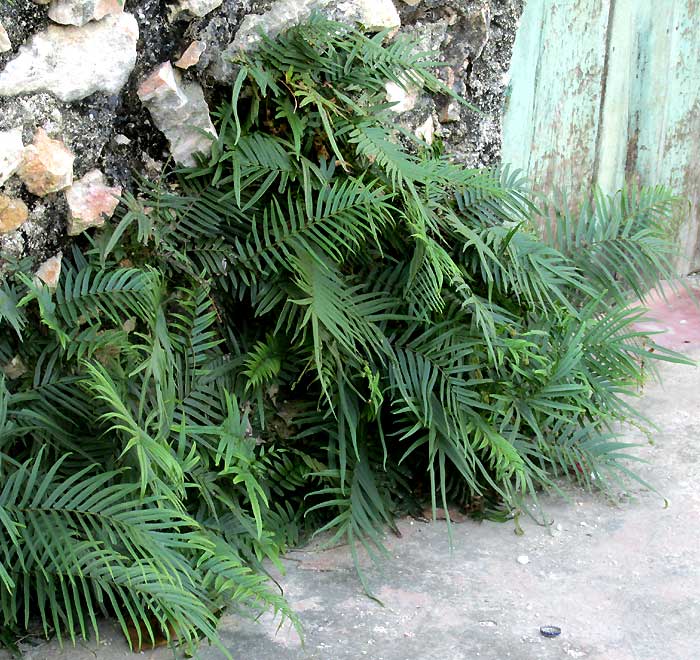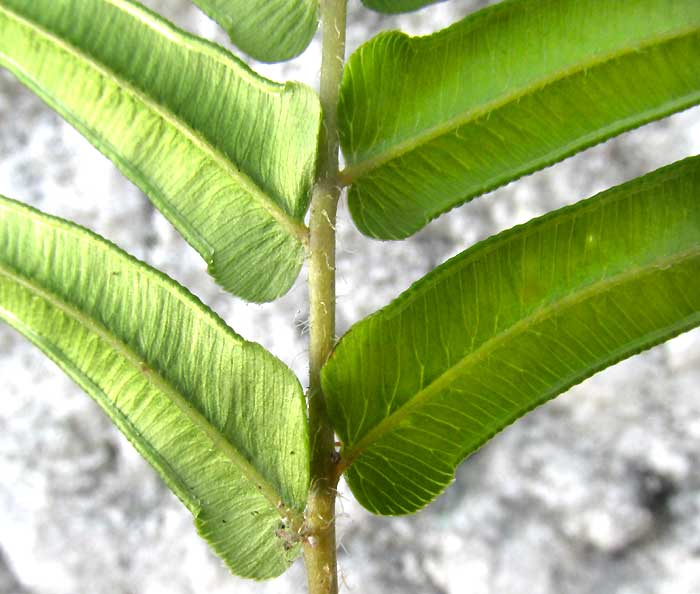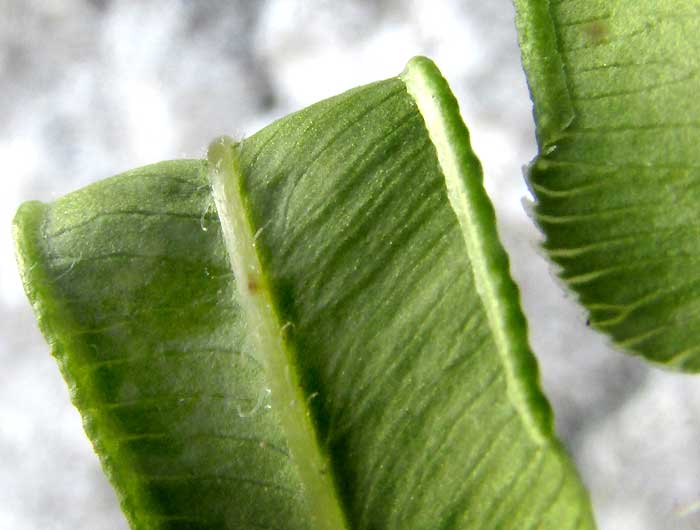Excerpts from Jim Conrad's
Naturalist Newsletter
Issued on March 9, 2020, from the forest just west of Tepakán; elev. ~9m (~30 ft), N21.053°, W89.052°; north-central Yucatán state, MÉXICO
CHINESE BRAKE
The arid Yucatan is home to relatively few fern species, most but not all species needing moist environments. I'd almost decided that the only fern species around Tepakán was the Lip Fern growing on stone walls in town, but then this week I noticed what's shown below, growing on the perpetually shaded northern side of a stone-walled house in Tepakán:

With the fronds divided into long, slender sections, the pinnae, and frond tips ending in an especially long pinna, this fern's fronds were just like those of the Elephantleaf Brake we saw in the Lacandon Reserve in Chiapas in 2016, but much smaller. To confirm that it was a brake, genus Pteris, I looked on the undersides of the pinnae and saw what appears below:

Brakes, like lip-ferns, belong to that group of ferns whose reproductive, spore-containing, sandgrain-like sporangia are tucked beneath the margins of the pinnae, nicely shown on our Elephantleaf Brake page. Here you can see that the pinna margins curve downward, but no sporangia are apparent. The fronds are immature. A closer look at the under-curved margins, showing bumps that must be maturing sporangia, is shown below:

Numerous brake species -- genus Pteris -- occur worldwide, so which is this? CICY, the Yucatan's "Center for Scientific Investigation," lists three brake species for the Yucatan Peninsula, all sporadically and rarely occurring. Of these three species, the pinnae of Pteris longifolia appear to be longer and narrower than those of our Tepakán species. The pinnae of Pteris grandifolia appear to be relatively broader than on our species. That leaves PTERIS VÍTTATA, the fronds of which appear to match those in the pictures. This is a clumsy way to identify things, but sometimes it's the best we can do. Besides, this is exactly the species I think most likely to occur growing weedlike at the base of a house's wall around here.
For, Pteris vittata is native to southern Europe and Asia, as well as tropical Africa and Australia, and is invasive in warm climates worldwide, especially on limestone. The wall's stones are limestone, and the concrete sidewalk extending from the wall is limy, too.
Chinese Brakes are increasingly famous for being able to extract heavy metals from soils -- a pollution-control process known as "phytoremediation" or "phytoextraction." The fern's fronds accumulate arsenic taken from the soil. Plant Chinese Brake on arsenic-polluted land and periodically harvest the fronds, then do something with the fronds so the arsenic they contain can't cause problems. Chinese Brake fronds can be harvested several times a year without affecting either the fern's health or its capacity to accumulate arsenic.